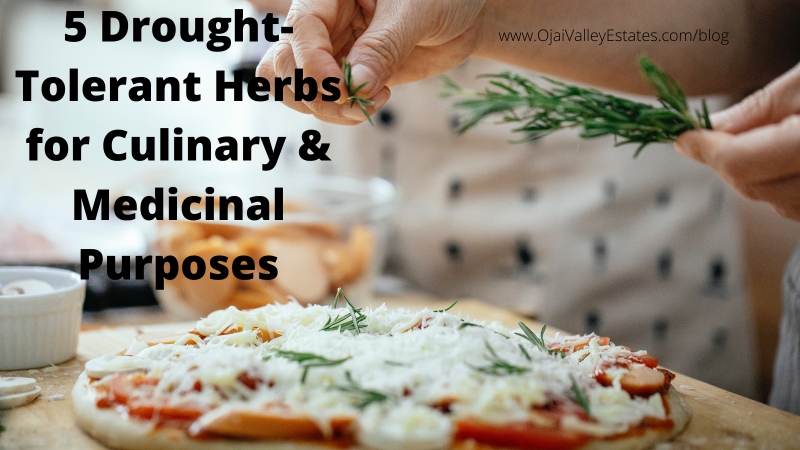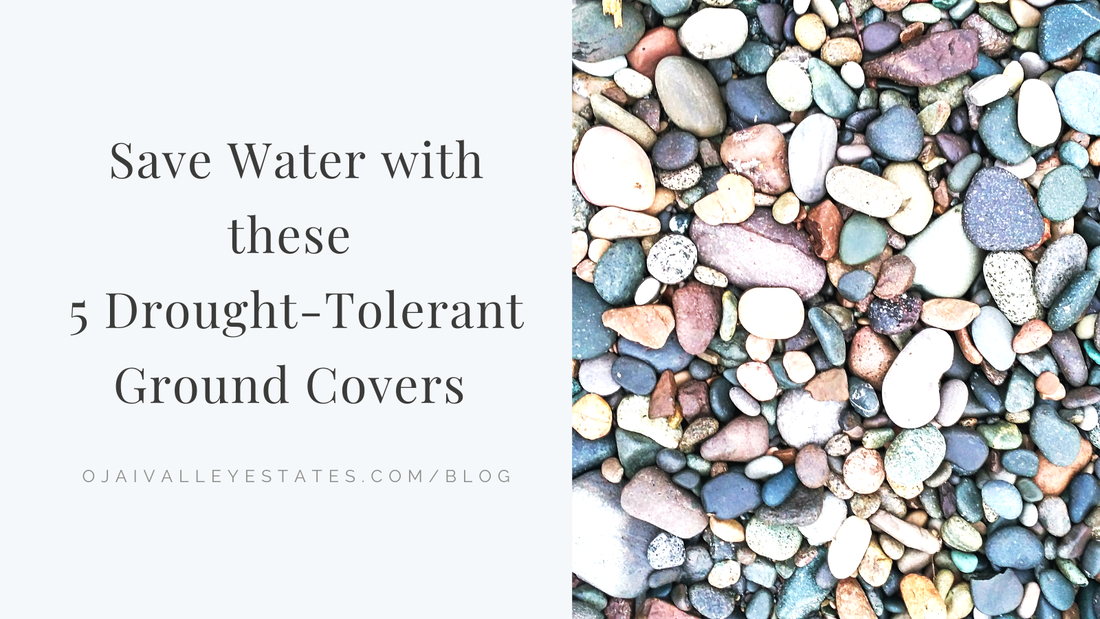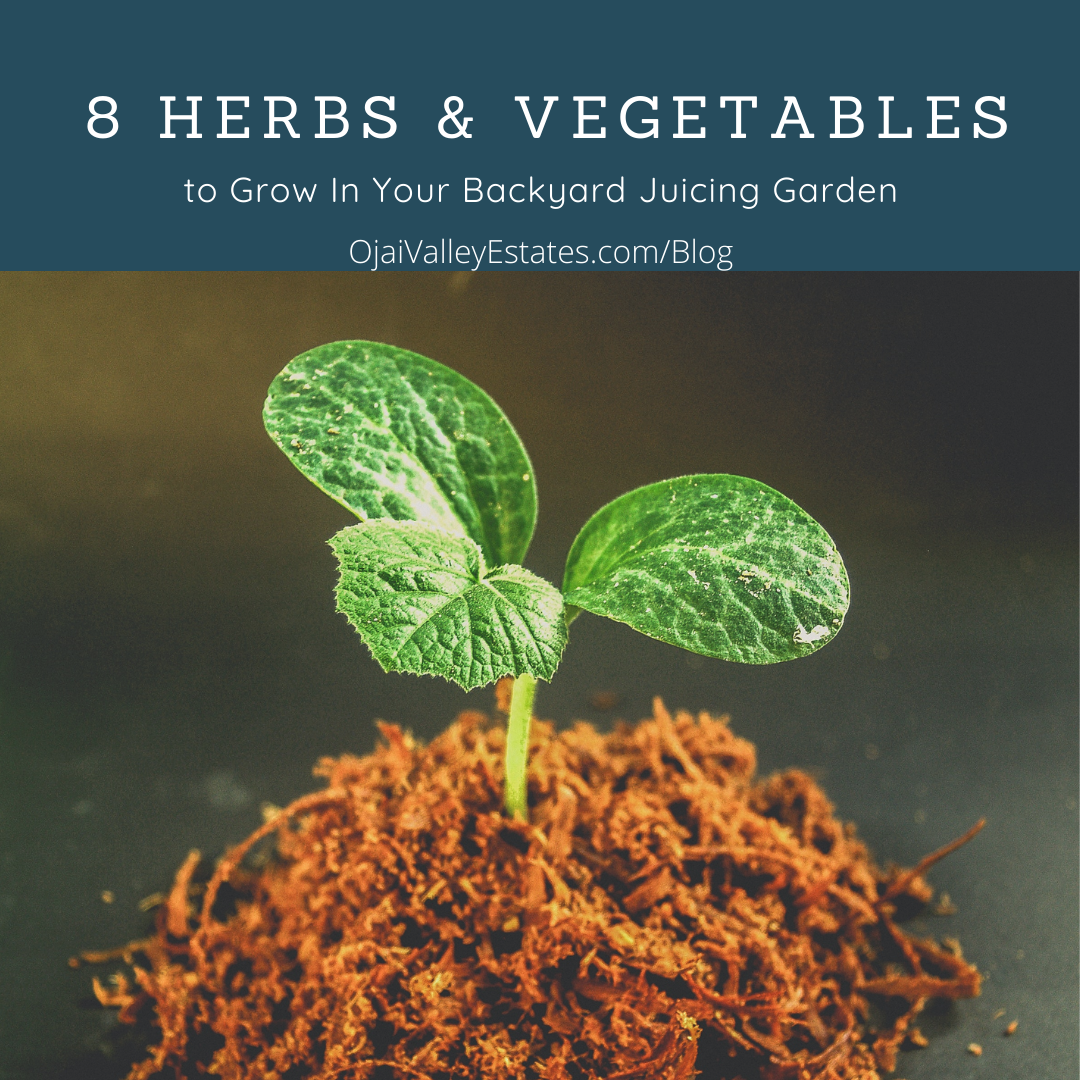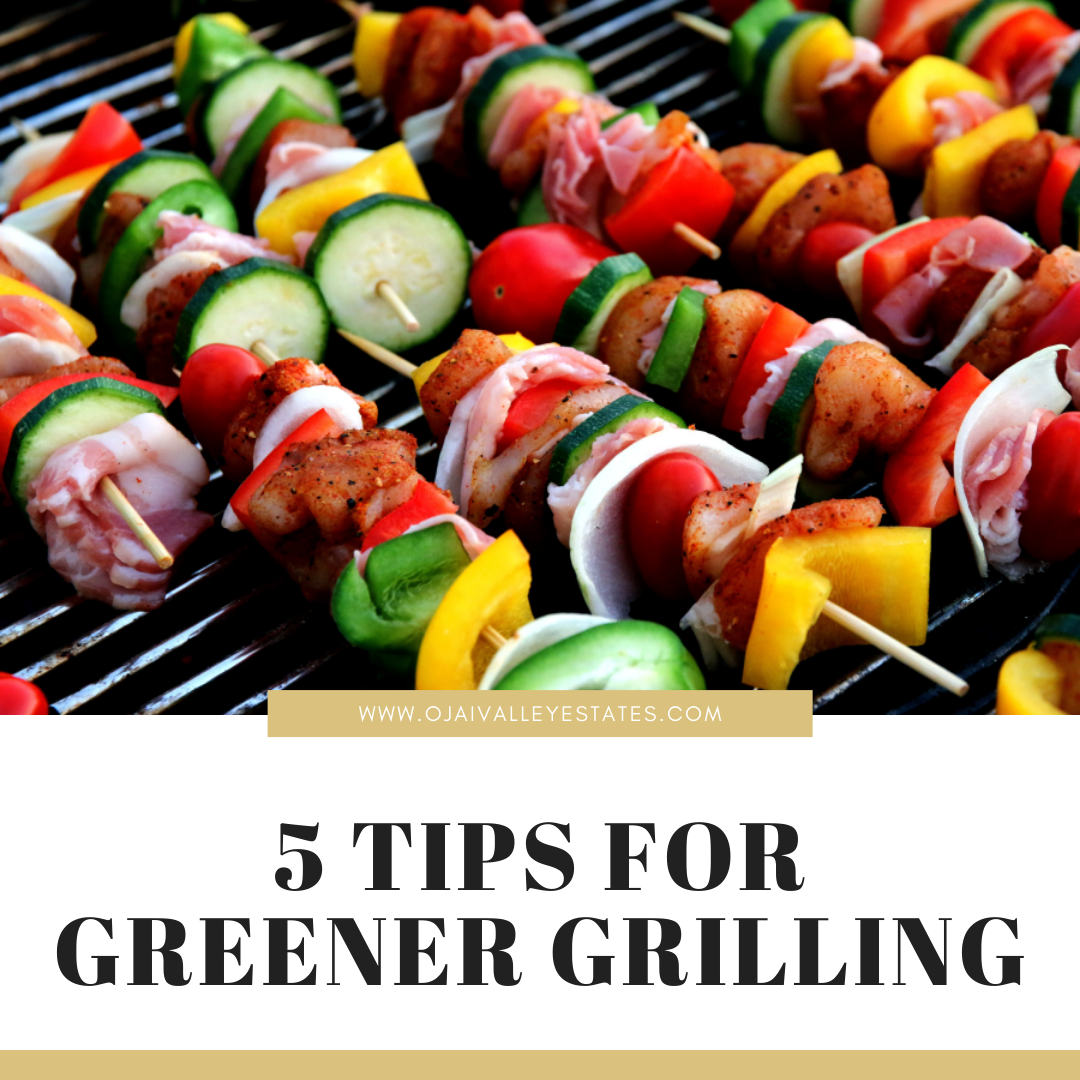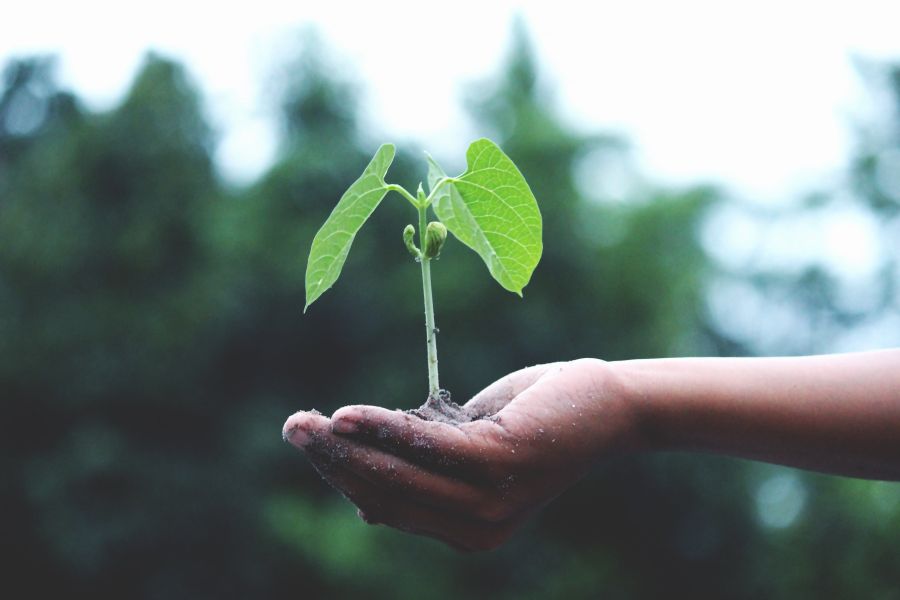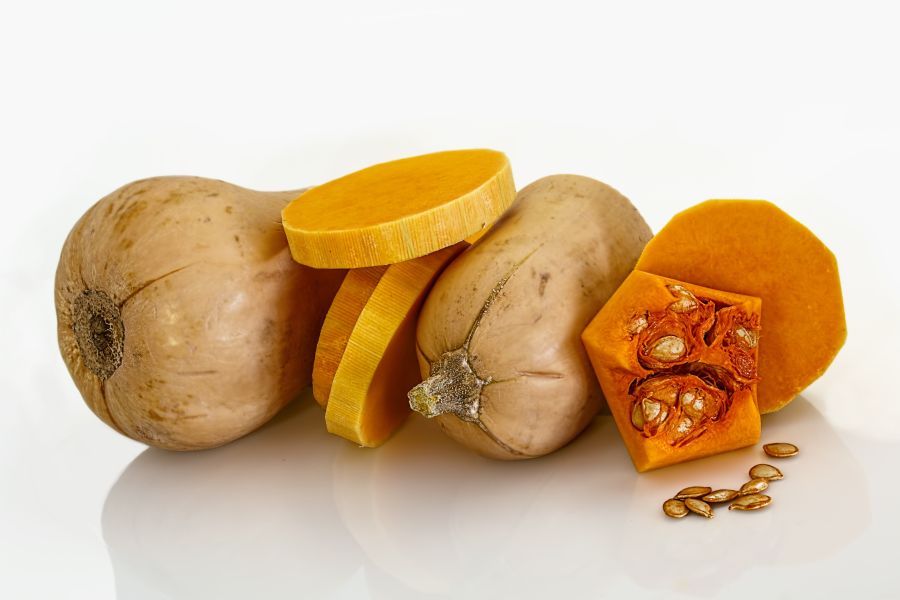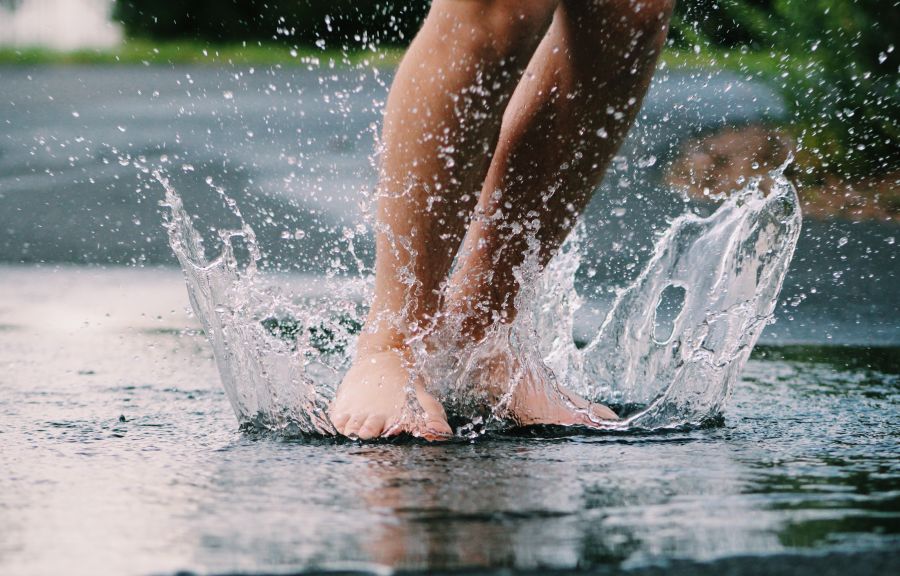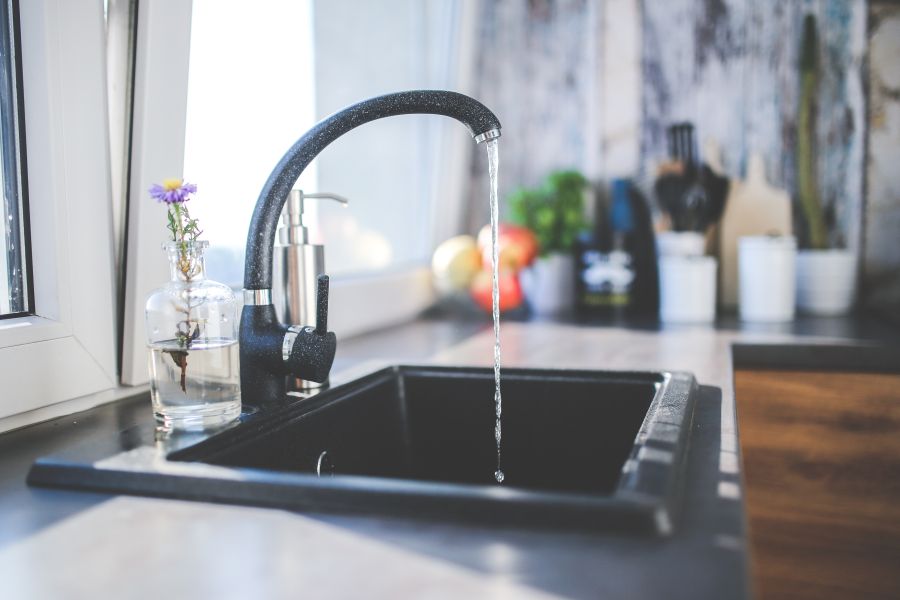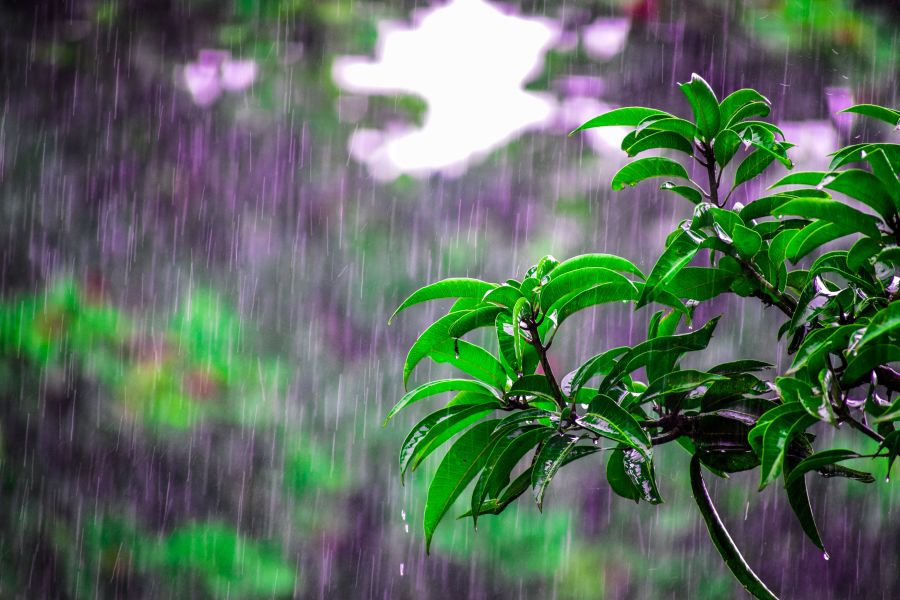- Home
-
Featured Listings
- Ojai Valley Homes for Sale >
- Ventura County Homes for Sale >
- Lots and Land for Sale >
- Commercial Properties for Sale >
- Commercial Properties for Rent >
-
Sold Properties
>
- Little Orchard Farms
- 1475 Buena Vista Street
- 474 Avenida de la Vereda
- 1084 Woodland Avenue
- 4239 Grand Avenue
- 910 Spring Street
- 775 Spring Street
- Frog River Ranch
- 75 High Street
- 405 West Ojai Avenue
- 135 Wormwood Street
- 921 Patricia Court
- 12523 Treeranch Road
- 755 Spring Street
- 10802 Oak Knoll Road
- 1205 Fierro Drive
- 1202 Loma Drive 122
- 104 East Warner Street
- 13382 East Sulphur Mountain Road
- 150 Monte Via
- 311 Shady Lane
- 906 Logan Avenue
- 620 Jordan Avenue
- 487 Montana Circle
- 701 Canada Street
- 1188 Fierro Drive
- 8577 Liveoak Avenue
- 10248 Ojai Santa Paula Road
- 1210 South La Luna Avenue
- 2899 Matilija Canyon Road
- 1114 Alviria Drive
- 106 East Eucalyptus Street
- 913 Gardner Avenue
- 214 Eucalyptus Street
- 709 Lemon Grove Avenue
- 60 Watkins Way
- 1330 South La Luna Avenue
- 350 Old Grade Road
- 9972 Creek Road
- 1923 Meiners Road
- 12605 Highwinds Road
- 240 Feliz Drive
- 11373 Puesta Del Sol
- 11311 Creek Road
- 1116 Del Nido Court
- 802 El Toro Road
- 131 West Oak View Avenue
- Lucky Q Ranch
- 291 Larmier Avenue
- 1577 Kenewa Street >
- 300 Del Norte Road
- 707 Mesa Drive
- 46 Olive Street
- 616 West Heather Street
- 805 Park Road
- 407 Tico Road
- 4569 Grand Avenue
- 209 South Ventura Street
- 10808 Creek Road
- 10864 Creek Road
- 1436 North Montgomery Street
- 562 Thomas Street
- 206 Mahoney Avenue
- 601 Canada Street
- 5180 Reeves Road
- 1923 South Hill Road
- Gateway Plaza
- 250 El Camino Drive
- 2451 Bonmark Drive
- 990 Loma Drive
- 1273 South Rice Road #72
- 646 Country Drive
- 1405 Meadowbrook Road
- 10999 Ojai Santa Paula Road
- 8726 Nye Road
- 366 Ridgeway Place
- 10692 Encino Drive
- 210 Del Norte Road
- 1175 Camille Drive
- 10248 Ojai Santa Paula Road
- 125 Prospect Street
- 126 Valley Ridge Street
- 434 South Carrillo Road
- 307 Drown Avenue
- 1400 Loma Drive
- 1215 Daly Road
- 48 Rockaway Road
- 131 Palm Drive (Camarillo)
- 12147 Old Walnut Road
- 10655 Encino Drive
- 706 Mesa Drive
- 914 Patricia Court
- 2451 Bonmark Drive
- 1195 Rancho Court
- 81 Grapevine Road
- 522 Pleasant Avenue
- 15301 Ojai Road
- 214 Topa Topa Drive
- 107 Shady Lane
- 550 Donna Street
- 161 Sunset Avenue
- Matilija Canyon Ranch
- 3359 Reeves Road
- 10802 Creek Road
- 512 Grand Avenue
- 779 Country Drive
- 570 Old Ventura Avenue
- 609 Canada Street Unit F
- 2800 Maricopa Highway
- 417 McAndrew Road
- 1211 North Signal Street
- 205 East Oak View Avenue
- 153 Pueblo Avenue
- 10950 Encino Drive
- 350 Olive Street
- 66 Grapevine Road
- 1188 Woodland Avenue
- 120 Riverside Road
- Rancho Grande
- 212 Topa Topa Drive
- 12170 Grape Hill Road
- 7884 Camp Chaffee Road
- 2285 East Ojai Avenue
- 2267 Burnham Road
- 12774 Tree Ranch Road
- 773 Fairview Road
- 2230 South Rice Road
- 166 South Poli Street
- 142 Don Ricardo Way
- 88 High Street
- 543 Spring Street
- 4 Catalina Drive
- 837 South La Luna Avenue
- 410 Crestview Drive
- 353 South Lomita Avenue
- 310 Monte Via Avenue
- 2110 Sumac Drive
- 2125 East Ojai Avenue
- 442 Burnham Road
- 605 Grand Avenue
- 122 Olive Street
- 267 Fairview Road
- 302 Fairview Road
- 520 Foothill Road
- 10254 Ojai Santa Paula Road
- 2171 Burnham Road
- 12770 Tree Ranch Road
- 403 N Montgomery Street
- 1485 Orchard Drive
- 929 Cuyama Road
- 14843 Maricopa Highway
- 2979 Matilija Canyon Road
- 1420 Cuyama Road
- 1921 Meiners Road
- 128 Canterbury Court
- Ojai Valley Rentals >
-
About Ojai
- About The Davis Group
-
Resources
- Blog
- Contact Us
|
Commercial air fresheners will cover up odors for a while, but they are often laden with toxic chemicals and can exacerbate respiratory issues, cause headaches and dermatitis, and be toxic to pets. Naturally fragranced candles, potpourri, simmer pots, diffusers, and room sprays all tend to mask odors without eliminating them. This is fine if you need a quick fix or for use with odor elimination options while they are working their magic. But to really get to the source of the problem and make your house smell better, you need to eliminate the odor, rather than cover it. Here are six ways to naturally neutralize odors. Windows and Fans – Airing out the space is a good first step for odor elimination. If the walls, floors, and textiles are holding the smell, this is not going to be a long-term solution, but it is a good start. Open windows and turn on fans to increase air circulation and air out the space. Baking Soda – Baking soda has so many uses around the house that I always keep a big bag of it on hand. For carpets, rugs, upholstered furniture, and other textiles that are holding smoke, pet, or other household odors, baking soda is a great option to try. This natural odor eliminator can be sprinkled on carpet or fabric to absorb odors. Leave it on for at least 30 minutes – longer for more stubborn odors – and then vacuum it up and empty the vacuum in your outside garbage can. You can also use baking soda in a bowl or box for deodorizing closets and refrigerators, sprinkle it in shoes to absorb odors, or add a cup to a load of laundry to help eliminate tougher odors in clothes and bedding. If you are not concerned about animals or children getting into it, it is best to leave baking soda for at least 24 hours before tossing it out or vacuuming surfaces where it has been sprinkled. Activated Charcoal – Small bags of activated charcoal can be placed in closets, shoes, drawers, cars, pet areas, and around the house to absorb odors. They are inexpensive, easy to use, and can be reused repeatedly after setting them outside in the sun for a few hours to release the odors they have absorbed. Distilled White Vinegar – Like baking soda, vinegar is one of those household staples that seems to be good for everything. To allow it to work its odor-elimination magic, put a small amount of vinegar in a bowl and place it in the area that is need of deodorization. You can also mix it with water in a spray bottle to neutralize odors in the air. Vodka – Fill a spray bottle with unflavored vodka to use as an air and fabric deodorizer. Vodka kills odor-causing bacteria, neutralizes odors in fabrics, and dries quickly. I have never had an issue with vodka causing discoloration or damage to fabrics and have never heard of this happening, but if you have a favorite garment or chair that you are concerned about, make sure to try it in an inconspicuous area first. Some folks like to cut their vodka with water or to add a few drops of essential oil to the spray bottle. Cheap vodka works perfectly fine for odor elimination, so you can just buy the cheapest, unflavored vodka you can find. Of course, if you prefer to use the good stuff, I am not here to tell you how to live. Coffee Grounds – The nitrogen in coffee grounds helps make them effective for neutralizing odors in your home. A small bowl or sachet of dry coffee grounds can help eliminate odors in smaller spaces, such as closets or refrigerators, as well as in whole rooms. You can use fresh grounds or used coffee grounds, but if you use used coffee grounds, be sure to spread them out on a cookie sheet to dry first. Like with vodka, you can use the cheapest coffee you can find, since nitrogen is nitrogen, so, if you are not a coffee drinker, buy the cheap stuff for this. If you are a coffee drinker, use the grounds from whatever coffee you are drinking. For ongoing odor control, make sure you stay on top of household tasks that can lead to smelly situations when left undone. This includes regularly taking out the trash and recyclables, emptying the kitchen scrap bucket into your backyard composter, changing bedding, doing laundry, vacuuming carpets and rugs, changing the air filter on your HVAC system, bathing your pets, and checking for spoiled food in the refrigerator. It is also good to regularly clean your dishwasher, washing machine, garbage disposal, and trash and recycling bins. If you are trying to deodorize a house that was exposed to smoke or pet odors over a long period of time, you may need to replace the carpet, wipe down the walls and ceiling with vinegar, and repaint the walls and ceilings to remove the odor. AimeeJo Davis-Varela is a freelance writer specializing in real estate, sustainable home improvement, eco-friendly landscaping, green living and travel writing. She is also the owner of Mind Your Manors, which provides second home management services.
0 Comments
If mandatory water use restrictions looming yet again are not enough to convince you we all need to be conserving water, all you need to do is take a drive around Lake Casitas to see just how serious the situation is. Many folks in Ojai have already taken significant steps to save water, such as replacing lawns with drought-tolerant landscaping options, installing rain barrels to catch our infrequent rain, and choosing high-efficiency appliances.
If you would like to continue to grow food for your family but are looking for ways to save water in your vegetable garden, you might consider growing low-water vegetables and herbs. While deciding what to plant, consider this list of drought-tolerant herbs for inspiration. 1. Rosemary: This versatile herb is best known for its culinary and medicinal qualities and is often grown as a hedge in Southern California. It is also a great topiary option, a good addition to your container garden, an effective privacy screen, and a natural way to keep snails and slugs out of your vegetable garden. 2. Feverfew: Feverfew is probably best known for its use as a headache and migraine remedy, but throughout history it has been used for a variety of medicinal purposes. This drought-tolerant herb with white flowers reminiscent of tiny daisies has been used to treat anemia, allergies, fever, arthritis, and the common cold. 3. Oregano: This popular herb garden option is generally grown for culinary purposes, but oregano also has medicinal qualities and can be grown as an ornamental plant. Oregano can thrive with little water grown in the ground or in containers and can be particularly appealing for its ability to repel a variety of insects when planted around your outdoor living areas. 4. Echinacea: Echinacea is a member of the daisy family and can be found in all sorts of herbal and over-the-counter remedies for preventing and treating the flu and the common cold. It can be grown in your garden for use in making home remedies and teas or can simply be used as an ornamental plant. Pink flowers are the most common, but you can also find Echinacea with red, white, or orange blooms. 5. Thyme: Thyme is available in taller varieties that can be grown for culinary and medicinal use and low-growing varieties that can be used as a low-water ground cover. Ground cover varieties can handle foot traffic, so you can even grow them between stepping stones in walkways. Historically, thyme grown for medicinal purposes has been used to treat sore throat, bronchitis, fatigue, muscle pain, anxiety, parasites, and several other ailments. Herbs, in particular, can also be grown as a low-water border along a walkway or patio or can be used as a ground cover for larger areas. You can see examples of this with the varieties of lavender and sage commonly found in Ojai landscapes, but there are lots of other options from which to choose as well. Californians are accustomed to ongoing drought conditions and have spent years honing our water conservation efforts. With so much else going on in the world at the moment, it is easy to let something like watching our water consumption fall to the wayside, particularly knowing that we moved out of a state of drought earlier this year. But La Niña seems to be making this winter drier than usual, which could mean an end to our current reprieve. This means we cannot let up on our efforts and must continue making water-saving choices whenever possible. One easy way to conserve water is to choose drought-tolerant ground covers when designing or re-designing your landscaping. So, if installing or replacing a ground cover is on your pandemic project list, here are five low-water options to consider. 1. Gravel: In the realm of drought-friendly ground covers, it does not get much better than a ground cover that requires no water at all. Gravel comes in a variety of sizes and colors and is a good choice for driveways, walkways, areas around fire features, and other outdoor living areas. Using gravel as a ground cover also limits weed growth and can help control erosion and runoff. 2. Mulch, Bark, or Wood Chips: This type of ground cover requires no water, is more affordable than many options, and is available in a variety of sizes, types, and colors. Like gravel, these can help limit weed growth, but they will eventually break down or fade, so you can expect to replenish these ground covers more often. 3. Lantana: One of the great things about lantana is that it is very easy to find. This flowering, evergreen perennial spreads easily, requires little water once established (I hardly ever water mine), and comes in some beautiful colors, including purple, pink, white, blue, red, yellow, and orange. When purchasing lantana, make sure you choose a ground cover cultivar, since it also comes in shrub cultivars that will not work well as a ground cover. 4. Creeping Rosemary: This evergreen perennial herb cascades quite nicely, so this is a good choice for raised borders or allowing to grow over walls. As a ground cover, creeping rosemary spreads quickly and is drought tolerant once established. It blooms with clusters of blue blossoms, attracts bees to your garden, fills the air with its aroma, and can even be harvested for culinary purposes. 5. Mexican Fleabane: Mexican fleabane is a fast-growing, flowering perennial native to Mexico and Central America. Often chosen for planting in rock gardens or in spots where it can thrive in the crevices between paving stones, this hardy ground cover loves full sun and will happily self-seed to promote spread. This one requires a bit more maintenance and water than lantana or creeping rosemary, but if you love the idea of a carpet of daisy-like flowers, you might not mind. AimeeJo Davis-Varela is a freelance writer specializing in real estate, sustainable home improvement, eco-friendly landscaping, green living and travel writing. She is also the owner of Mind Your Manors, which provides second home management services.
Growing your own food is a rewarding experience that allows you to spend more time outdoors, save money on your grocery bill, and know exactly where your food is coming from. It is also a great way to have fresh, organic produce conveniently available right in your backyard and a fun activity you can do with your family. Eating healthy is more important than ever and limiting trips to the grocery store is not a bad idea right now. So, if we can grow some of our own food at home and use these ingredients to make healthy juices filled with antioxidants and immune-boosting nutrients, that sounds like a pretty good quarantine project to me. To help inspire you, here are eight of my favorite juicing ingredients I grow in my vegetable garden and that will be super easy for you to grow in yours. 1. Spinach This dark, leafy green provides magnesium, iron, vitamin A, vitamin C, vitamin K, and more, which makes this easy-to-grow vegetable a good choice for your juicing garden. Spinach thrives in containers or in the ground, is easy to grow from seed, and allows you to harvest on demand as it continues to produce leaves. To make sure you have a steady supply, plant your crop in two-week intervals. 2. Kale Generally considered a superfood, kale is a nutrient-dense, leafy green providing an array of vitamins and minerals, including magnesium, potassium, vitamin A, vitamin K, vitamin C, manganese, and calcium. You can grow kale in containers or in the ground and can start from seeds or seedlings. If you juice often, you will likely go through a lot of kale, so, if possible, dedicate a good amount of space for your kale plants and plant in three-week intervals. 3. Cucumbers Cucumber juice is a refreshing treat on a hot day and provides potassium, magnesium, vitamin K, vitamin C, vitamin A, and B vitamins. You can grow your plants in containers or in the ground, but keep in mind that you will need to support your cucumbers with a large tomato cage or a trellis. Consider growing more than one variety for different purposes. For example, this year, I’m growing Persian cucumbers for juicing and snacking and Nationals for pickling. 4. Tomatoes Add tomatoes to your garden for juicing, salsas, soups, stews, and sauces. Tomatoes are incredibly easy to grow in this area and can be grown in the ground or in containers. They provide lutein, lycopene, vitamin C, vitamin A, vitamin K, and potassium. If you are planning on using them for different purposes, consider growing different varieties. For example, San Marzanos are higher in pectin, which makes them better for stews and sauces; whereas, Better Boys or Celebrities have a higher juice content, which makes them better for juicing. 5. Carrots While they don’t actually make you see better at night, carrots are high in beta carotene, which is essential to eye health, as well as your overall wellness. They are incredibly easy to grow and can be grown in the ground or in containers – as long as the containers are deep enough to accommodate their growth. Carrots are a popular juicing ingredient, so they are a great addition to your juicing garden. However, if you are short on space, skip the carrots. Organic carrots are readily available and less expensive than other organic produce options, so keep buying these at the store or farmers market, and save your garden space for other veggies. 6. Parsley Parsley takes patience. You may not see any signs of life for up to three weeks after planting your seeds, but once it finally gets going, just one or two plants will probably provide as much as you need for juicing. Often used for detoxing the liver, parsley is not going to add a lot of flavor to your juices, but it does add iron, folate, vitamin K, vitamin A, and vitamin C. 7. Basil If you find green juices bland, basil may be just the herb you need to up your juicing game. Providing magnesium, zinc, potassium, calcium, and vitamin K, this easy-to-grow herb is packed with nutrition, as well as flavor. Basil grows well in the ground or in containers, and you can dry it or freeze it for later use if you harvest more than you need. 8. Celery Adding celery to your juices provides potassium, folate, fiber, vitamin A, vitamin E, and polyphenols. It grows well in containers or in the ground and is so easy to grow. Whenever you buy a bunch of organic celery, cut off the root end and place it in a small bowl of water. You will start seeing growth almost immediately. Once you have significant growth and it has sprouted new roots, transfer it to your garden or to a container with soil. Before you know it, you will have your very own celery patch. AimeeJo Davis-Varela is a freelance writer specializing in real estate, sustainable home improvement, eco-friendly landscaping, green living and travel writing. She is also the owner of Mind Your Manors, which provides second home management services.
Barbecue grills can stay in use throughout the year in the Ojai area, but summer is the official grilling season, which makes this the perfect time to talk about making our backyard barbecues healthier for us and the planet.
Cookouts provide the perfect platform from bringing together friends and family to catch up, lounge by the pool, indulge in a meal cooked over an open fire and more fully enjoy our home's outdoor living areas. Previous generations gathered around the grill without giving much thought to the potential health or environmental risks associated with dousing charcoal with lighter fluid and dining on charred steaks. However, we have more recently learned that those blackened bits of meat, abundant smoke and chemical-laden products are not so great for us or the environment. Outdoor parties, in general, can wreak havoc on the planet with disposable party supplies, toxic pesticides to keep the bugs away, petrochemicals released from lighter fluid, charcoal and wood smoke polluting the air, and fat dripping onto the grill causing more smoke and pollution. And, of course, there are also the carcinogens and harmful compounds from eating foods cooked at high heat over an open flame that accumulate in the body and increase health risks. Rather than give up grilling and resign ourselves to cooking indoors, all we really need to do is adopt greener grilling practices that are better for our guests and the environment. Here are five tips to get you started: 1. Choose a Greener Grill The grills that are currently considered greenest are solar-powered, corn-burning and hydrogen-powered grills. Of course, these are also the most expensive and hardest to find. It is much easier to find propane grills, which are eco-friendlier than charcoal grills, but if you can spring for a natural gas grill or an electric grill, that is even better. If you have a charcoal grill with which you are not quite ready to part, you can go greener by switching from conventional charcoal to natural or lump charcoal, or you can use plant-based ethanol disks, which are a greener option. 2. Skip the Lighter Fluid The use of lighter fluid is responsible for the release of tons of volatile organic compounds into the air every year in the U.S., and self-lighting charcoal is not any better. While these two options might be the most convenient, it is actually quite easy to light your charcoal using a charcoal chimney or electric charcoal lighter. Using an inexpensive charcoal chimney is your greenest bet. 3. Maximize Your Grill Usage Firing up your grill just to cook a steak or two is a waste of whichever type of fuel your grill requires, but you can easily adopt a greener grilling practice by always making it a point to make the most of the heat you create with your barbecue. When barbecuing, cook your entire meal on the grill and make enough to have leftovers for at least a couple of days to reduce future fuel needs. 4. Go Organic (and Local) Purchase local, organic meats and produce whenever possible to reduce transportation-related pollution and energy and to lower the amount of harmful substances you feed your family (and put into the air, soil and water supply). Grilling more vegetables and less meat is another way to easily make your next cookout healthier and more environmentally friendly. 5. Keep Your Grill Clean Regular care and cleaning will extend the life of your grill and, in the case of charcoal or wood grills, it also shortens the time it takes to preheat your grill and reduces the amount of smoke your grill emits. With any type of grill, fat and food that falls below the grate can cause excess smoke as well, but you can avoid this by regularly removing any buildup. Cutting extra fat off meats before grilling them can also reduce smoke production and makes for a healthier meal for your family and friends. The global pandemic has changed our lives in many ways, including revising our priorities as we balance personal and public health with meeting our basic needs, figuring out new ways to work, and determining the best ways to be both social and safe. In times such as this when our focus is on the short-term goals of staying healthy, keeping businesses afloat, and finding a way to the other side of the pandemic, it can be difficult to also keep an eye towards long-term goals, such as keeping the planet healthy for future generations. This is exacerbated by some of the necessary changes put in place to reduce transmission and protect both consumers and workers. For example, we can no longer grab a cup of coffee in our reusable mugs, and many grocery stores are no longer allowing the use of reusable shopping bags. While many of us are not driving as much, we are increasing the environmental effects of transportation by ordering everything online and having it delivered to our doorstep. Those who have replaced dining out with regularly ordering takeout and delivery now have stacks of single-use food containers going into the recycling bin or to the landfill every week. The focus needs to be on keeping ourselves and each other healthy and working together to get through this. This requires using more disposable products than most of us would like, but there are still steps we can take to maintain a greener lifestyle while focusing on these immediate priorities. We can start with these: 1. Resist the urge to stock up on bottled water. The water supply is not currently under threat. Continue using your filter pitchers, fill your own jugs at Rainbow Bridge, or establish delivery service for three- or five-gallon, reusable jugs that you return to the provider. 2. Start a compost pile. If you are cooking more than you used to, you have more kitchen scraps to discard. If you don’t already have a compost bin or pile, start one to put those scraps to good use in your garden. 3. Invest in a sparkling water maker. Products like SodaStream let you make your own sparkling water and flavored sodas, which means fewer cans and bottles to recycle. 4. Green your takeout and delivery routine. We cannot use our own containers when we order food to go right now, but we can still limit the waste that comes with these orders. If you are picking up food to eat at home, refuse the utensils, napkins, and straws that usually come with takeout. If you are having food delivered, specify that you do not want utensils and napkins delivered with your order. When picking up food on your lunch break or on your way to a socially distanced picnic, bring your own cloth napkins, reusable straws, and utensils. There are lots of travel sets available with carrying cases that you can keep in your car or bag to make sure you always have reusable options with you. 5. Change your buying habits. Look for simple ways to purchase fewer single-use products. For example, buy yogurt that comes in reusable glass jars instead of plastic containers that need to be recycled. Or, better yet, if you are spending more time at home, you might think about learning how to make your own yogurt. 6. Make the best bag choices you can. If you cannot use reusable shopping bags at your favorite places to shop, ask for paper bags. If only plastic bags are available, sanitize them and stash them away for later use as trash bags or poop bags. 7. Consolidate your online orders. When we are spending more time at home and ordering most of what we need online, it is easy to fall into the habit of placing orders whenever you think of something you need. This is particularly true if you are one of the many who do most of our buying through Amazon Prime with free shipping on however many orders we place in a day. Reduce packaging waste and transportation by treating your online shopping as you would in-person shopping: make a list and consolidate your shopping trips. Instead of jumping online to order nail polish today, a case of canned tomatoes tomorrow, and then yarn for a new craft project the next day, make a shopping list and place your orders at the same time. You can even place things in your cart so you won’t forget about them – just resist the urge to hit “Buy Now” every time you want something. If you are an Amazon Prime member, you can reduce packaging waste and transportation even more by forgoing the much-loved, two-day shipping and choosing Amazon Day instead. With this program, orders are consolidated into as few boxes as possible and all delivered on the same day each week. 8. Support local crafters by purchasing reusable masks. Reusable masks are better for the environment than single-use options, and there are lots of local folks who have taken up mask making to supplement incomes reduced by the pandemic. Keep in mind that reusable masks need to be washed after each use and that some materials provide better protection than others. Before buying masks, do a quick online search to educate yourself about the best options. AimeeJo Davis-Varela is a freelance writer specializing in real estate, sustainable home improvement, eco-friendly landscaping, green living and travel writing. She is also the owner of Mind Your Manors, which provides second home management services.
Rats and mice are constant issues for Ojai homeowners. Regardless of how well you maintain your home and yard, there is a good chance these critters will at least stop by for a visit. This is particularly true if you live around rodent-friendly fruit or oak trees, and I can’t think of very many homes in Ojai that are not close to at least one of these. Like all animals, rats and mice are primarily focused on what they need to survive: food, water and shelter. If you have rats or mice in your yard, this means that your property is fulfilling these basic needs and providing a hospitable environment for rodents to call home. Folks who need to manage a rat population or repel mice have both lethal and non-lethal methods from which to choose. For those who want to kill them, Ojai is home to several pest control companies that will be happy to take care of this for you, or there are traps and poison for folks who want to do it themselves. Of course, there are issues that come with each of these options, so you need to be aware that your efforts to control rodents in this manner may result in the injury or death of animals you like having around, such as raptors, rabbits, pets and other wildlife. Additionally, whenever possible, it is always a good idea to try natural pest control methods that do not end in any unnecessary deaths of rodents or other animals before turning to lethal measures. For folks who want to get rid of rats or mice without killing them, there is really only one option: encouraging the rats and mice to move on by taking away the food, water and shelter they seek and making your property less hospitable. Removing water sources can be difficult, since this includes water bowls for pets, troughs and buckets used for larger animals, drip irrigation systems, and water features. So, while you may need to look at removing water sources at some point, let’s start with easier tasks, including removing food sources, limiting shelter options and making your yard less appealing to repel rats and mice naturally. Keep in mind, if you have an established colony, it is going to require a multi-prong approach that includes both eradication and prevention to avoid the establishment of future colonies. 14 Ways to Repel Rats & Mice Naturally (Without Killing Them) First, let’s work on removing food sources: 1. Move bird feeders away from outdoor living areas and regularly clean up any waste left on the ground. 2. Cover dog food and other pet food when your pets are not outside. 3. Store animal food securely. You aren’t going to be able to keep rats and mice out of your hay barn, but you can store your cat, dog, bird, chicken, goat and other animal feed in secure containers that won’t provide an easy meal for rodents. 3. Wrap flexible sheet metal around the trunks of fruit trees to prevent rats and mice from climbing the trees and eating the fruit (or making nests). You will also need to prune branches near fences or rooflines where rats and mice could gain access. 4. Always keep your trash and yard waste bins securely closed. 5. Choose a compost bin that deters rodents, since these are prime spots for rats and mice to find both food and nesting materials. I use tumblers on stands and always keep them closed. If you have a bin that sits on the ground and has an open bottom, you can place wire mesh between your bin and the ground to slow them down, but I have found that they generally find a way in anyways. If you have an open compost pile, rather than a bin, move your compost pile as far away from your house and outdoor living areas as possible. 6. Secure your chicken coop with 1/8-inch hardware cloth around the bottom of the fence. This isn’t completely rat proof, since they can still climb over the hardware cloth and get through the chicken wire above, but this can help keep rats from going after your chickens’ eggs and scratch. 7. Regularly remove pet waste from your yard. Pet poop may be gross to us, but rats recognize its nutritional value and are more than happy to dine on it. The step in getting rid of rats and mice naturally is removing shelter options, which includes blocking or removing pathways that provide cover for rodents as they traverse your yard: 8. Clear unnecessary clutter that provides shelter or pathways for rats and mice. This includes storing patio cushions when not in use and keeping areas near fences and walls as clear as possible. For example, dog houses, deck boxes and flowerpots should be kept away from walls to avoid creating a protected trail system for rodents. Wood piles should also be placed away from structures and, if possible, should be at least 18 inches above the ground to avoid creating shelter for rodents underneath. You will also want to make sure rats and mice cannot find shelter elsewhere in your yard, such as in a rarely used barbecue grill or under your potting bench. 9. Prune trees away from fences and structures and wrap the trunks in sheet metal to keep rats from making nests in the canopy. If you hate the idea of wrapping your tree trunks in metal, you can also try planting rat-repelling plants, such a lavender or mint, or placing an ultrasonic rat repeller at the base of the trunk. 10. Remove dense ground covers that provide shelter and allow rats and mice to move freely throughout your yard. 11. Block access under permanent and semi-permanent structures in your yard. Garden sheds, decks, gazebos, and other structures that rarely or never move are ideal options for rats and mice looking for a place to call home. You need to completely seal points of entry, since rats and mice can get through very small spaces, so make sure you do not already have any resident rats, mice, squirrels or other animals before sealing the area. If you block access to an area while animals are inside, they will die from starvation and dehydration, which is a crueler and slower death than poisoning or traps. And finally, let’s work on making your yard less appealing to rats and mice looking for a place to set up camp: 12. Deploy an ultrasonic rodent repeller. How well these work depends on who you ask, but if you have a significant rat population or a growing family of mice, they are worth a try. Most ultrasonic pest repellents are designed to ward off all animals, which includes animals you might like having around, such as dogs, deer, rabbits, or cats. So, if you decide to give this option a shot, make sure you purchase one that has settings for different types of animals so that you can ward off rodents without disturbing your furry friends. 13. Scare rats and mice off naturally off with predator urine. Some people swear by this method for removing unwanted rodents, which is why I’m including it on this list. However, I don’t really think it works and, therefore, is not worth having your yard smell like urine. Maybe introducing this smell could help with your rat or mice problem if you currently have no predators on your property, but most folks already have a predator or two running around. Think about it, if you have a dog or a cat that goes outside, you already have predator urine in your yard. If you live in an area where you have coyotes, bobcats or mountain lions at least occasionally on your property, you have even scarier predator urine that is not currently scaring away the rats or mice hanging out in your yard. 14. Introduce fragrances that make it difficult for rats and mice to use their sense of smell as a necessary survival mechanism. Rodents rely on smell to know when predators are around and to find food. Therefore, rats and mice generally choose to not hang out in areas where strong fragrances make it impossible to do this. You can purchase rat repellent pouches, pellets or sprays at hardware stores, feed stores and garden centers. This is a convenient option, but these can get expensive, since they will need to be regularly replaced. You can achieve the same effect of naturally repelling rats and mice with inexpensive items you likely already have around the house or can purchase at the dollar store. For example, dryer sheets and perfumed soaps work just as well, and you probably already have these on hand. Alternatively, you can plant mint or lavender near potential nesting areas or soak cotton balls or rags with peppermint oil or eucalyptus oil to place around your outdoor living areas to deter rats and mice. If you choose to use cotton balls or rags, make sure you place them in spots where you pets cannot access them. Owl Boxes: Another Way to Get Rid of Rats and Mice that is Better than Traps or Poison There is another option that lies between using traps and poison and using non-lethal, natural methods for getting rid of rats and mice. While this article focuses on natural ways to get rid of rodents without killing them, this lethal-but-natural option is worth including to make sure you are aware of all your options before turning to traps and poison. The Ojai Raptor Center sells barn owl and screech owl boxes that you can install at your home to encourage owls to nest on your property. This helps support the local raptor population while also providing you with natural rodent control, since owls are natural predators of rats and mice. The Ojai Raptor Center website also offers free barn owl box plans if you prefer to build your own. AimeeJo Davis-Varela is a member of The Davis Group and a freelance writer specializing in real estate, sustainable home improvement, eco-friendly landscaping, green living and travel writing. She is also the owner of Mind Your Manors, which provides second home management services.
If you are a beginner gardener or looking to expand your existing garden, you are going to need seeds. While you could, of course, head to a local nursery or go online and purchase seed packets, there are other options for getting free seeds and cuttings for your vegetable garden or flowerbed. These options also give you the opportunity to learn from local gardeners, build community, and support seed sovereignty. So, let’s get right to it with these 11 ways to get free seeds and cuttings for your garden. 1. Save seeds from your garden. If you have a vegetable garden or flowerbeds already in place, you can save seeds from your existing plants to plant for the next growing season. If you are interested in saving seeds, check out this guide to seed saving from The Seed Ambassadors Project and this guide from HowtoSaveSeeds.com. I recommend checking out both of these guides, since The Seed Ambassadors Project guide gives a great overview of seed saving, including a glossary to help you learn the lingo, while the guide on HowtoSaveSeeds.com is great for easily looking up how to save particular types of seeds. 2. Save seeds from produce. You can also save seeds from produce you have purchased. It is best to save seeds from organic, non-GMO foods, since seeds from genetically modified produce may not germinate or may grow unpredictably. Saving seeds from local produce purchased from produce stands or the farmers market is best, since you know these seeds have already proven to thrive where you live. You are also more likely to get organic, non-GMO seeds this way. 3. Grow food plants from purchased herbs and produce. Many foods purchased at the store can be regrown from cuttings or by saving the base to replant. Celery, romaine lettuce, parsley, and basil are examples of foods that can be grown from cuttings or saving and planting the base. 4. Ask friends for cuttings of ornamental plants. Succulents are particularly easy to grow from cuttings, but you can also grow many houseplants and other ornamental plants for free by asking friends or family for small cuttings. 5. Divide your current plants. Perennials can often be divided into multiple plants to plant in your garden. To accomplish this, you can either dig up the entire plant and root system to divide, or you can use a shovel to dig up just part of the plant and root system to relocate. 6. Attend the Annual Ojai Seed & Plant Swap. Going to a local seed swap, such as the Annual Ojai Seed & Plant Swap hosted by the Ojai Valley Green Coalition, is a great way to get free seeds that grow well in your area. Aside from exchanging your surplus seeds for seeds or cuttings for your garden, local seed swaps also provide the opportunity to learn from local gardeners and farmers to take your gardening game to the next level. 7. Start your own seed swap group. If you have friends, family members or co-workers who also like to garden, consider starting your own seed swapping group to exchange seeds, cuttings and plants. If you don’t know any gardeners, this is a great opportunity to expand your social circle and connect with local gardeners in your area. 8. Join an online seed swapping group. If you missed your local seed swapping event or just prefer to do things online, look for an online seed swapping group where you can exchange seeds with other members. Your best bests are the groups available on GardenWeb and Facebook. 9. Borrow seeds from a seed library. Seed libraries are a good solution for new gardeners who do not yet have seeds to swap with other gardeners. This option allows you to get free seeds for your garden, and then save seeds when you harvest the crop so that you can return an equal or greater amount of seeds to the library to share with others. I believe the closest seed library is at the Camarillo Library, but please add a comment below if you are aware of one closer to Ojai. 10. Check the free section of websites like Craigslist. You can find all sorts of treasures in the free section on Craigslist and this sometimes includes seeds, cuttings or plants. 11. Request seeds from The Free Seed Project. Each year, The Free Seed Project sends thousands of free seed packets to folks who register on their website. To request free seeds from this non-profit organization, the group asks that you fit one of these criteria:
If you know of other ways to get free seeds for backyard gardens in Ojai and the surrounding area, please share them with us in the comments! AimeeJo Davis-Varela is a member of The Davis Group and a freelance writer specializing in real estate, sustainable home improvement, eco-friendly landscaping, green living and travel writing. She is also the owner of Mind Your Manors, which provides second home management services.
5 Ways to Save Water When It Rains 1. Set out your houseplants.
Plants prefer rainwater to tap water, so they are sure to thank you if you set them outside during gentle rainfall. Anything too heavy can damage the plant, so only set your plants outside if light to medium rain is expected. If you have plants on a covered patio that are not too heavy to move, you can also set them out in the open to enjoy the rain. 2. Turn off automatic irrigation systems. If you do not have a rain sensor that automatically turns off your irrigation system when it rains, make sure to turn it off manually when rain is expected. 3. Fill water bowls with the rain. Take your pet’s water bowls from in the house or on covered patios and set them outside to fill them with rainwater. Keep in mind that contaminated rainwater can make your pets sick (or worse), so make sure the bowls are in an area where they will collect pure rainwater falling from the sky. Keep the bowls away from areas where they may collect runoff from your roof or other structures. 4. Collect water in buckets. While runoff from your roof or canopies is not potable and should not be used for drinking or to irrigate food plants, it can be used for other purposes, such as rinsing recyclables or watering ornamental landscaping. So, if you do not have rain barrels or have some corners where gutters do not divert the water, set out buckets to capture the water in these areas. You can also set out buckets away from structures to capture pure rainwater to irrigate food plants. 5. Do your planting just before it rains. Any time you plant seeds or transplant plants in your garden, they need a good watering. So, one easy way to save water when it rains is to hold off on your planting until the forecast calls for rain. This is a good time to reseed patchy lawns, plant new flowers or seeds, or transplant plants from your container garden into borders or garden beds. Just be sure that we are not expecting heavy rain, since this might wash your seeds away. Find more ways to converse water; 10 Ways to Use Water from Rain Barrels 11 Ways to Save Water in Winter 10 Easy Ways to Save Water Ojai needs to conserve water now more than ever, so don’t let a little rain convince you otherwise. As we move deeper into the rainy season and start getting a few showers here and there, it might be tempting to ease up on your water conservation efforts and enjoy just a few extra minutes in a hot shower or run your sprinklers an extra day to try to keep your lawn green. But all you need to do is take a drive out by Lake Casitas to be reminded that every drop counts. According to the Environmental Protection Agency (EPA), American families use an average of 300 gallons of water at home every day. Nationwide, about 70 percent of residential water use occurs inside the home and about 30 percent is used outdoors. Ojaians have really come together on this issue and most of us have taken steps to significantly reduce our water use. Unfortunately, we all know that we are beyond the point where installing low-flow showerheads or turning off the water when we brush our teeth is going to save us. Therefore, we can not slack off as we head into winter and hope for rain. To help you keep conserving water throughout the year, here are 11 ways you can save water in winter. 11 Ways to Save Water in Winter 1. Check for water leaks regularly and fix them quickly. Even a small leak can waste a huge amount of water. Toilets are the most common source of indoor water leaks, so start here if you think you may have a leak. You also should not ignore dripping faucets and showerheads, since one drip per second wastes five gallons every day that you do not get that leak fixed. For most homes here, the most common source of outdoor water leaks is automatic irrigation systems. It can be difficult to know if you have a small leak in a drip system, so you will need to check your lines, emitters and sprinklers regularly, while also keeping an eye out for any areas that look wetter than they should be. If you have gardeners, ask them to add checking your drip system or sprinkler system to their regular tasks. This can help detect leaks faster so that you can repair them quickly. If you think you might have a leak and you know where your water meter is, you can confirm your suspicions by making sure all of the water is turned off on your property, and then looking at the meter. If your meter is moving while the water is turned off, you have a leak. To make it even easier to stay on top of leaks, install a water monitoring system, which will watch your water meter for you and alert you to leaks. 2. Fix leaking swimming pools. Swimming pools lose water to evaporation every day and need to be refilled at least a couple of inches every week. Because of this, it can be difficult to determine if your pool is leaking. Now, if you are adding several inches of water each week and it is not the middle of a scorching summer, you can be pretty sure you have a leak and should call a professional out for testing. But, if you are losing between two and four inches per week, it is more difficult to determine if the water loss is just from evaporation and your kids splashing around or if it is from leakage. Before you pay a professional to test your pool for leaks, you can perform your own test with a bucket, a permanent marker, and a tape measure or ruler. Take a five-gallon bucket and fill it almost to the top with water from the pool. Set the bucket on one of the steps leading into your pool so that it is partially submerged. Use your permanent marker to mark the level of the water inside your bucket and to mark the level of the water on the outside of the bucket. Make sure no one uses the pool during the test, since that could disturb your bucket of water or cause excess water to leave the pool through splashing. Make sure you leave your bucket out for at least one full day before you check the water levels. When you return to see how much water you have lost, use your tape measure or ruler to measure the distance between the water level you marked on the bucket the day before and where the water level is now. If the two water levels dropped the same amount, then your water loss is likely from evaporation. If the water level on the outside of the bucket has dropped more than the water level inside the bucket has, it is time to call a leak detection company to assess the situation. Winter is the perfect time to address pool leaks, since you likely are not using your pool as much anyways, so it will not be as much of an inconvenience to have it out of commission during the repair. 3. Cover your pool. Since we know that swimming pools generally lose between one-quarter and one-half inch of water to evaporation every day, it makes sense that anything we can do to reduce this water loss is a good idea. You will probably not be using your pool quite as much during the winter months, so – even if you do not cover it in the summer (which you should) – you can more conveniently keep it covered in between uses in the winter. Just making this one change could help you save thousands of gallons of water every year. 4. Insulate your pipes. Pipe insulation is generally associated with colder parts of the country, but it is still a good idea to insulate exposed pipes even in areas where pipes bursting from freezing temperatures is not a common occurrence. Frozen pipes that burst are obviously big water wasters, so if there is any chance of your pipes freezing in winter, you should insulate them as part of your water-saving efforts. To save water throughout the year, insulate your hot water pipes. You know how you turn the faucet on in your shower and watch the water run down the drain while you wait for it to get warm enough to step in? Insulating your hot water pipes can shorten the amount of time water is being wasted while you wait for it to warm up. This will make more of a difference in the winter, but it can help you conserve water all year by getting hot water to your faucets faster. 5. Keep buckets on hand. Another way to save water while waiting for your shower to warm up is to use a bucket or two to catch the cold water during your wait. You can then use this water to flush your toilet or irrigate landscaping. Keeping a shallow tub or bowl in your kitchen sink allows you to save even more water by capturing the water you use to wash fruits and vegetables. Of course, you can do these two water-saving tricks throughout the year, but, to save even more water in winter, you can take all of your buckets outside whenever the forecast calls for rain. 6. Set plants outside when rain is expected. Your houseplants may not be able to live outside during the winter, since they are accustomed to the cozy temperature inside, but you can set them out to be irrigated by Mother Nature when rain is in the forecast. Rainwater is untreated, slightly acidic and naturally soft. Most plants prefer it to tap water, and watering your plants with rainwater is an easy way to conserve water during winter and spring when we get the majority of our annual rain. So, if rain is coming our way and is not expected to be a heavy storm that could damage your plants, set out your houseplants and any outdoor plants that are under cover but easily moveable. 7. Open your compost bin when rain is coming. This one is not going to save a ton of water, but every drop counts, so it is still worth doing. If your compost bin is too dry, it will take longer for your kitchen scraps and yard clippings to turn into usable compost. So, if your compost pile is a bit on the dry side, uncover it before the next rain to let it get some much-needed moisture that didn’t have to come from your garden hose. Since you do not want your compost bin to stay too wet for too long (to avoid unwanted smells), you probably will not need to do this every time it rains. When it is not the winter rainy season, you can save a few gallons of water by saving your cooking water to add to your compost bin. 8. Install one or more rain barrels. If just 1,000 square feet of your roof drains into your rain barrel system, you can collect between about 225 and 300 gallons of water every time we get one-half inch of rain. Most rain barrels sold at garden centers hold between 50 and 70 gallons of water, so you can easily collect enough rainwater to fill four to six barrels in a single storm. This makes winter the perfect time to install a rain barrel or two to collect water you can use to irrigate ornamental landscaping during the dry season. You may even qualify for a $35 rebate per barrel from SoCal Water$mart for up to two barrels, which helps offset the cost of this winter water-saving idea. To see if you qualify, visit the SoCal Water$mart website – where you can even apply online. 9. Install a tankless water heater and a recirculating pump. There is nothing quite like a hot shower on a cold, winter day, but waiting for the water to warm up wastes gallons every time you shower. Even with a low-flow showerhead, you could be wasting up to 2.5 gallons for each minute you let it run before stepping in. A tankless water heater and recirculating pump, together, will give you almost instant hot water to help you save water in winter and throughout the year. 10. Install a rain sensor. It may not seem like we get much rain in Ventura County, but we do get some. During the rainy season, we get enough to reduce our irrigation needs – at least during weeks when we have had rainfall. Therefore, a rain sensor can help you easily conserve water during the wetter months of winter and early spring. Simply connect the rain sensor to your automatic irrigation system, and this rain-sensing switch will automatically shut off the system when it rains. 11. Allow faucets to drip. I know this one does not sound like a good idea when we are trying to save water, but, in certain circumstances, you can potentially save hundreds of gallons of water by sacrificing a few. Here’s the deal: If you haven’t had a chance to insulate your pipes and the temperature drops below freezing where you live, it is possible that a pipe could break. Most folks in the Ojai area are not going to need to worry about this, but, if you do, letting your faucets drip can help you avoid a big water leak from a busted pipe. To save the water dripping from your faucets, simply place a bowl or bucket under each faucet. This will allow you to catch every drip to use for other purposes, such as watering plants or rinsing recyclables. AimeeJo Davis-Varela is a freelance writer specializing in real estate, sustainable home improvement, eco-friendly landscaping, green living and travel writing. She is also the owner of Mind Your Manors, which provides second home management services.
|
The Davis Group
Welcome to our
Ojai living and Ojai real estate blog. Subscribe by email...
Categories
All
Archives
June 2024
|
Home | Ojai Homes for Sale | About Ojai | About The Davis Group | Real Estate Resources | Blog | Contact Us
Nora Davis & The Davis Group | LIV Sotheby's International Realty | 727 West Ojai Ave., Suite D, Ojai, CA
- Home
-
Featured Listings
- Ojai Valley Homes for Sale >
- Ventura County Homes for Sale >
- Lots and Land for Sale >
- Commercial Properties for Sale >
- Commercial Properties for Rent >
-
Sold Properties
>
- Little Orchard Farms
- 1475 Buena Vista Street
- 474 Avenida de la Vereda
- 1084 Woodland Avenue
- 4239 Grand Avenue
- 910 Spring Street
- 775 Spring Street
- Frog River Ranch
- 75 High Street
- 405 West Ojai Avenue
- 135 Wormwood Street
- 921 Patricia Court
- 12523 Treeranch Road
- 755 Spring Street
- 10802 Oak Knoll Road
- 1205 Fierro Drive
- 1202 Loma Drive 122
- 104 East Warner Street
- 13382 East Sulphur Mountain Road
- 150 Monte Via
- 311 Shady Lane
- 906 Logan Avenue
- 620 Jordan Avenue
- 487 Montana Circle
- 701 Canada Street
- 1188 Fierro Drive
- 8577 Liveoak Avenue
- 10248 Ojai Santa Paula Road
- 1210 South La Luna Avenue
- 2899 Matilija Canyon Road
- 1114 Alviria Drive
- 106 East Eucalyptus Street
- 913 Gardner Avenue
- 214 Eucalyptus Street
- 709 Lemon Grove Avenue
- 60 Watkins Way
- 1330 South La Luna Avenue
- 350 Old Grade Road
- 9972 Creek Road
- 1923 Meiners Road
- 12605 Highwinds Road
- 240 Feliz Drive
- 11373 Puesta Del Sol
- 11311 Creek Road
- 1116 Del Nido Court
- 802 El Toro Road
- 131 West Oak View Avenue
- Lucky Q Ranch
- 291 Larmier Avenue
- 1577 Kenewa Street >
- 300 Del Norte Road
- 707 Mesa Drive
- 46 Olive Street
- 616 West Heather Street
- 805 Park Road
- 407 Tico Road
- 4569 Grand Avenue
- 209 South Ventura Street
- 10808 Creek Road
- 10864 Creek Road
- 1436 North Montgomery Street
- 562 Thomas Street
- 206 Mahoney Avenue
- 601 Canada Street
- 5180 Reeves Road
- 1923 South Hill Road
- Gateway Plaza
- 250 El Camino Drive
- 2451 Bonmark Drive
- 990 Loma Drive
- 1273 South Rice Road #72
- 646 Country Drive
- 1405 Meadowbrook Road
- 10999 Ojai Santa Paula Road
- 8726 Nye Road
- 366 Ridgeway Place
- 10692 Encino Drive
- 210 Del Norte Road
- 1175 Camille Drive
- 10248 Ojai Santa Paula Road
- 125 Prospect Street
- 126 Valley Ridge Street
- 434 South Carrillo Road
- 307 Drown Avenue
- 1400 Loma Drive
- 1215 Daly Road
- 48 Rockaway Road
- 131 Palm Drive (Camarillo)
- 12147 Old Walnut Road
- 10655 Encino Drive
- 706 Mesa Drive
- 914 Patricia Court
- 2451 Bonmark Drive
- 1195 Rancho Court
- 81 Grapevine Road
- 522 Pleasant Avenue
- 15301 Ojai Road
- 214 Topa Topa Drive
- 107 Shady Lane
- 550 Donna Street
- 161 Sunset Avenue
- Matilija Canyon Ranch
- 3359 Reeves Road
- 10802 Creek Road
- 512 Grand Avenue
- 779 Country Drive
- 570 Old Ventura Avenue
- 609 Canada Street Unit F
- 2800 Maricopa Highway
- 417 McAndrew Road
- 1211 North Signal Street
- 205 East Oak View Avenue
- 153 Pueblo Avenue
- 10950 Encino Drive
- 350 Olive Street
- 66 Grapevine Road
- 1188 Woodland Avenue
- 120 Riverside Road
- Rancho Grande
- 212 Topa Topa Drive
- 12170 Grape Hill Road
- 7884 Camp Chaffee Road
- 2285 East Ojai Avenue
- 2267 Burnham Road
- 12774 Tree Ranch Road
- 773 Fairview Road
- 2230 South Rice Road
- 166 South Poli Street
- 142 Don Ricardo Way
- 88 High Street
- 543 Spring Street
- 4 Catalina Drive
- 837 South La Luna Avenue
- 410 Crestview Drive
- 353 South Lomita Avenue
- 310 Monte Via Avenue
- 2110 Sumac Drive
- 2125 East Ojai Avenue
- 442 Burnham Road
- 605 Grand Avenue
- 122 Olive Street
- 267 Fairview Road
- 302 Fairview Road
- 520 Foothill Road
- 10254 Ojai Santa Paula Road
- 2171 Burnham Road
- 12770 Tree Ranch Road
- 403 N Montgomery Street
- 1485 Orchard Drive
- 929 Cuyama Road
- 14843 Maricopa Highway
- 2979 Matilija Canyon Road
- 1420 Cuyama Road
- 1921 Meiners Road
- 128 Canterbury Court
- Ojai Valley Rentals >
-
About Ojai
- About The Davis Group
-
Resources
- Blog
- Contact Us

